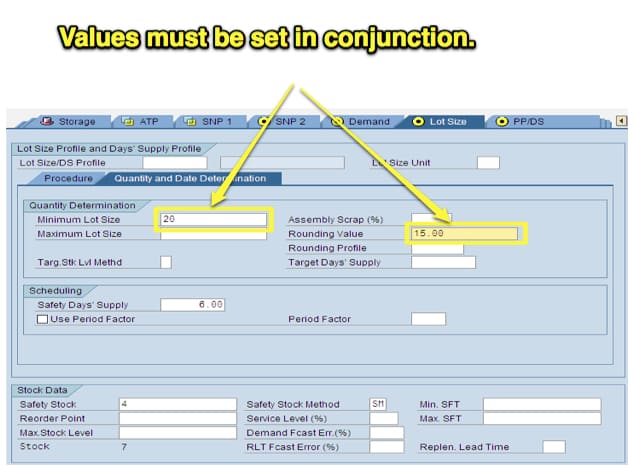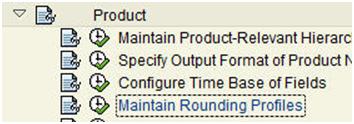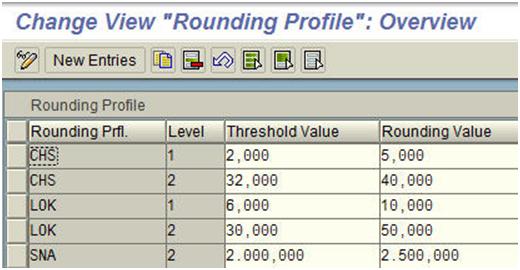How to Best Use the Rounding Value vs the Lot Size in SAP SNP
Executive Summary
- The minimum lot size and the rounding value are two essential parameters in SNP.
- Both the rounding value and lot size are forms of order batching.
- Order batching allows for order quantities to be purchased or produced that is economically viable for the company.

Video Introduction: Rounding Value and Lot Sizes
Text Introduction (Skip if You Watched the Video)
The minimum lot size and the rounding value are two essential parameters in SNP. Both the rounding value and lot size are forms of order batching. Order batching allows for order quantities to be purchased or produced that is economically viable for the company. The Rounding Value and Lot Size are used to create batching so that production and procurement are more efficient. The way these Rounding Value and Lot Size fields control the procurement is relatively simple but essential. You will learn how these values are set and where they are set.
Our References for This Article
If you want to see our references for this article and other Brightwork related articles, see this link.
What Are the Rounding Value and Lot Size?
The Minimum Lot Size is mostly used to force SAP SNP to wait until enough requirements have been gathered before an order is placed. This prevents material from being shipped in uneconomic quantities. The Rounding Value essentially does the opposite; it rounds up the order quantity. The Minimum Lot Size and Rounding Value can be, of course, be used in conjunction with one another.
- The Minimum Lot Size is the minimum quantity in which the product can be ordered in.
- The Rounding Value is the quantity multiple, which the order is rounded to.
However, if the Rounding Value is higher than the Minimum Lot Size, the Rounding Value can increase the order quantity. It can increase it above the requirement. This is why the Rounding Value and Minimum Lot Size can be related under the right circumstances.
Where is Rounding Value and The Lot Size Set in SAP SNP?
Both of these values can be seen in the Lot Size tab of the Product Location Master.

What Is the Purpose of the Rounding Value?
The rounding value rounds the value up to the next increment for ordering. It is very similar to the lot size (in fact, you should check to see how it differs from the lot sizing on the Product Location Master). The following quotation from SAP explains how the rounding profile is used in SAP.
Consecutive number that identifies the level of the rounding profile. A rounding profile can be assigned several levels. For a rounding profile, you can define several threshold values with different rounding values. The threshold values must each be assigned to a level. You have to enter the levels, threshold values and rounding values in ascending order. During the lot size calculation later on, the system, however, uses the opposite procedure: It tries to determine rounding levels and thus rounding values as large as possible. – SAP Help
Lot sizes are created here in the IMG:



Comparative Value Analysis
A good exercise shows different Minimum Lot Sizes (MOS) examples with Rounding Values (RV) to demonstrate how SNP would respond.
Option #1: MOS = 0, RV = 15
In this case, as soon as the first requirement for one is generated that is not covered by planned Stock on Hand, an order for 15 would be created. This would be the setting useful for high-profit items.
Option #2: MOS = 5, RV = 15
Any MOS, which is lower than the RV, makes the MOS virtually unused. For the MOS to contribute to the ordering in any way, it must be higher than the RV. Therefore, this setting would behave the same as the example above.
Option #3: MOS = 5, RV = 3
In this case, the purchase order minimum becomes 6, 2 x the RV of 3. In this scenario, the MOS effectively becomes 6, and order quantities are possible in 6, 9, 12, etc..
Option #4: MOS = 10, RV = 1
An RV of 1 would make no sense as the system is already required to order only in integer quantities. Therefore, for the RV to have any effect on ordering, it must always be above 1.
Option #5: MOS = 10, RV = 10:
When the MOS is set equal to the RV, the RV does not affect the lowest order amount but then controls the order increment after the MOS.
Where The Rounding Value Can be Set and How it Can be Recognized
There are several places to set the Rounding Value, as the quote below from SAP Help describes.
“The following applies for optimization-based planning: If you do not enter a rounding value or enter the value 0, the system uses the rounding logic of the production process model (PPM).
If you specified a rounding profile in the location product master, the system uses this profile instead of the rounding value. The SNP optimizer, deployment and the TLB all ignore the rounding profile.
You have to choose the discrete optimization method in the SNP optimizer profile and enter a discretization horizon in the Integral PPMs field of the Discrete Constraint tab page for the SNP optimizer to be able to take the rounding value into account.
So that the SNP-TLB can use the rounding value, you must set the corresponding indicator in Customizing for SNP under Basic Settings -> Maintain Global SNP Settings. Otherwise the SNP-TLB uses only the rounding value from the transportation lane. – SAP Help
Rounding Value and Lot Size as Forms of Order Batching
Both the rounding value and lot size are forms of order batching. Order batching is performed to produce economic order quantities. The opposite of order batching is called lot for lot ordering, which is merely ordering in quantities that match the sales orders that are placed upon the system. Order batching allows for order quantities to be purchased or produced that is economically viable for the company.
How Most Supply Planning Systems Work
 Most supply planning systems work by variable-order quantities combined with a minimum order quantity or rounding value to minimize transactional costs or shipping costs on orders.
Most supply planning systems work by variable-order quantities combined with a minimum order quantity or rounding value to minimize transactional costs or shipping costs on orders.
While the variable order quantity is the most common approach used in supply planning, there is a competing approach where the order quantity is kept static or a fixed order quantity. But the order quantity can be placed at any time. This is the fixed order quantity model of the fixed order quantity system.
What is a Fixed Order Quantity Inventory Model or Fixed Order Quantity System?
This describes not so much a particular software application but rather how it is configured to restrict orders to a fixed order quantity. The fixed order quantity may be connected to a reorder point. The reorder point is the level of inventory or planned inventory that a stocking position falls to, which triggers an order to be placed, in this case, an order of a fixed order quantity.
What is a Period Order Quantity or Periodic Order Quantity and the Fixed Period Inventory System?
A period order quantity or the periodic order quantity comes from a time before computers when orders were placed at specific intervals or periods. This is most often called a periodic inventory system, but it can be called a fixed period inventory system.
In the computerized age, the only real-time when a fixed period inventory system and resulting period order quantity makes any sense is when orders must be placed by a specific day or time. Therefore now it is quite unusual to see periodic order quantities generated from systems. The opposite of a periodic order system is a perpetual order system. Computerized inventory systems are perpetual systems. They update automatically when any goods issue or goods receipt is provided to the system.
They also calculated planned inventory by things like purchase orders, sales orders, and production requisitions, which does not require the stock to be incremented or decremented at the calculation time.
This can occur when a shipment is required to be made to an isolated location. For instance, for scientists working in the Antarctic, multiple shipments per year are not feasible. They must be supplied once per year. This is a periodic inventory system, in this case, yearly.
How Does a Fixed Order Quantity System Relate to a Minimum Order Quantity or Ordering Quantity
A variable order quantity system requires a minimum order quantity as the order quantity can be anything. However, imposing a minimum quantity is only necessary when the order quantity is not preset. In a fixed order quantity system, the minimums are calculated into the fixed-order quantity uploaded to the system. Therefore the fixed order quantity is the minimum quantity.
Conclusion
The Rounding Value is a consumption logic parameter. All consumption logic parameters should be set per product location. They can also be established by a grouping of product locations by understanding the other consumption parameters’ interaction. This is best accomplished by displaying a spreadsheet or table of product locations and their consumption parameters to those with the business knowledge to provide feedback on the parameters intelligently. After getting feedback, the consumption parameter results should be analyzed to understand the implications for what the agreed-upon settings are fully and socialize that analysis among a broad group of decision-makers. This continues not to be done in companies. This is why they still have problems ensuring that their consumption logic parameters are internally and externally consistent.
The fixed order quantity system is not commonly used. One reason for this is that once the minimum ordering quantity or minimum quantity is attained, there is little benefit (in most cases, but not all, as we have seen) to limit the order quantity to a fixed ordering quantity.